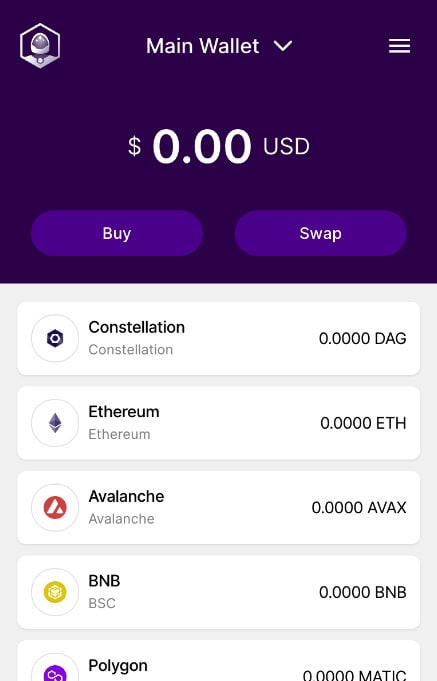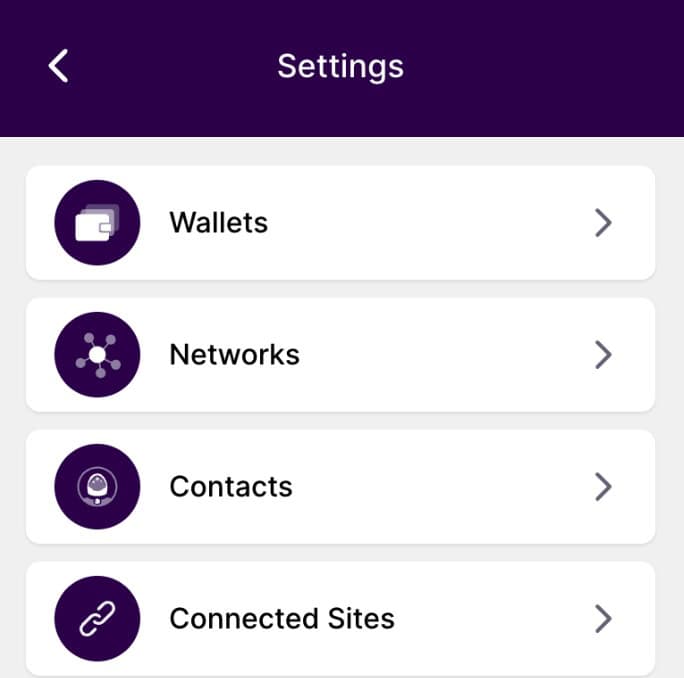How To Get Started With Constellation Network And Navigate An Ecosystem Outside Of Ethereum
Well, this week we’re taking off the training wheels. We’re going to be getting out of our comfort zone to dive into a whole new crypto wallet. And we’re not stopping there.
We’ll also be using our new wallet to dive into a network outside of the Ethereum ecosystem for the first time. But don’t worry, everything we’ve done to this point has prepared us for this.
Buckle up, Roaders. Let’s dive into Constellation Network!
What is Constellation Network?
Constellation is a decentralized network with a focus on allowing developers to build highly scalable and application-specific blockchains. Developers can build Metagraphs, or subnetworks, with the ability to highly customize their application for data validation and crypto incentives.
Their vision is to enable interoperability between web2 and other blockchain networks. Most notably they have been in direct contract with the US Department of Defense since 2019 to build secure and interoperable communications leveraging Metagraphs.
Constellation is the only ecosystem accompanied by a native wallet, developer tools for building decentralized applications, a DeFi portal (liquidity mining and bounties) and a hardware offering. And to add to its integrated suite of tools, Constellation users benefit from instantaneous transactions and no network fees. (yes, you read that right)
Comparing DAGs to Blockchains
Interestingly, the Constellation network is a directed acyclic graph (DAG) protocol (called Hypergraph), and not a blockchain. This differentiates Constellation from other networks in several ways:
- Recording transactions: Whereas blockchains rely on a chain of blocks to store and document transactions, DAGs utilize a web-like structure for recording transactions. This allows multiple transactions to be validated simultaneously.
- Reaching consensus: Blockchains use a range of methods to reach consensus, such as proof of work or proof of stake. DAGs are able to reach consensus significantly quicker due to their novel consensus mechanism, Proof of Reputable Observation.
- Transaction speed: DAG’s high scalability and unique consensus mechanism allow them to process 80,000 transactions/second on the application layer, significantly more than most blockchains.
- Metagraph Applications: Developers have access to tools that allow them to build customized networks (L1s) on top of the Hypergraph for additional scalability and security.
What Makes Constellation Network Stand Out?
Constellation Network and its ecosystem offer a unique value proposition to builders and users. First off, the structure and consensus of DAGs offer infinite scalability on the application layer (layer 1), with added layers of security on the protocol layer (layer 0).
This ensures users quick and gasless transactions on the network. That’s right Roaders, there are no gas fees to transact on Constellation Network.
Additionally, Constellation was built with an emphasis on interoperability, which we heard is being funded by the US Department of Defense. As new networks continue to emerge and fragment the crypto landscape, a focus on interconnectivity becomes more and more important.
Lastly, the network is equipped with 300+ global nodes, allowing them to maintain decentralization while also benefiting from the security provided by DAG architecture. Importantly, only three of these nodes are operated by Constellation’s foundation and team.
Getting Started With Constellation Network
To dive into the Constellation’s ecosystem, you will need to download their native Stargazer Wallet.
The Stargazer Wallet
Getting started with Stargazer is as quick and simple as a few clicks. All you need to do is download the app or extension, write down your seed phrase, and store it somewhere safe.
If hardware wallets are more your style, the Stargazer is also supported by the Bitfi hardware wallet.
And once your wallet is secured, you are ready to take advantage of Stargazer’s unique features:
- Multi-Chain Functionality: Hold assets from a range of blockchains and see all your assets in one multi-chain interface.
- Built-In Buy/Swap: Buy crypto directly in the wallet or fund it easily from a centralized exchange. You can also swap tokens for one another directly in the wallet.
- Contacts Page: Take the pain out of transferring crypto by adding addresses to your contacts and ensure you are always sending funds to the right place.
- Intuitive Interface: Benefit from a sleek and easy to use interface, catering to crypto beginners and advanced users.
- Superior Mobile App: Access your digital assets from a well-designed mobile interface and receive assistance from a crypto-native support team.
Exploring Stargazer’s Interface
After your wallet is created, you will arrive at Stargazer’s home screen:

- The list displays your digital asset balances and which blockchain each of our assets resides on.
- “Buy” allows you to purchase crypto directly from your wallet using a credit card.
- “Swap” gives you the ability to exchange tokens cross-chain on Constellation, ETH, Polygon, BSC and Avalanche.
- The top drop down allows you to switch between wallets if you manage multiple.
When you click on the dropdown in the top right corner, you will see these options:

- Since Stargazer is a multi-chain wallet, the “Wallets” tab allows you to see all of your respective wallet addresses. It also gives you the option to name your wallet or view your recovery phrase.
- “Networks” allows you to navigate to the testnets of the supported networks in order to test or deploy protocols. We got a sneak peak at one of their Metagraph test nets that currently submitted 115k snapshots in under a month!
- “Contacts” is an address book built into your wallet, offering a convenient way to store friend’s wallet addresses or regular destinations.
- “Connected sites” gives users an accessible way to disconnect from all dApps with one click, providing an extra layer of security.
Funding Our New Wallet
There are two simple ways to fund your Stargazer Wallet:
1/ Sending crypto from another wallet or centralized exchange: Once you create your wallet, you immediately are assigned a wallet address. Similarly to our Ethereum address, this is a long string of characters, but Stargazer’s addresses begin with “DAG” instead of “0x”.
Regardless, you can receive funds in the same way that you do with other wallets. Simply purchase $DAG on an exchange and transfer it into your wallet, or receive it from a friend. If you want to find the best exchange to buy a token, you can utilize the “Markets” tab of any coin on CoinGecko.
2/ Buying crypto directly in the wallet: Stargazer partners with Simplex, allowing users to purchase DAG directly in your wallet. You can use a credit or debit card for this purchase and funds are deposited directly into your wallet, but note that Simplex will charge a fee.
Next Steps:
Now that we have a set up, secured and funded Stargazer wallet, we are ready to fully dive into Constellation network. And the timing couldn’t be better.
Constellation is just around the corner from launching their application layer, called Metagraphs. In short, Metagraphs are subnetworks (L1s) where a developer can deploy a customized network to meet specialized needs.
This “blockchain-in-a-box” offering goes beyond smart contracts and reimagines the way cryptocurrencies and projects are built by correlating incentives, mining operations, and business logic for long term growth and transparency.
This report is for informational purposes only and should not be relied upon as a basis for investment decisions, nor is it offered or intended to be used as legal, tax, investment, financial or other advice. You should conduct your own research and consult independent counsel on the matters discussed within this report. Part performance of any asset is not indicative of future results.
It should also be noted that the writer(s) of this report may hold assets mentioned in the article at the time of writing.